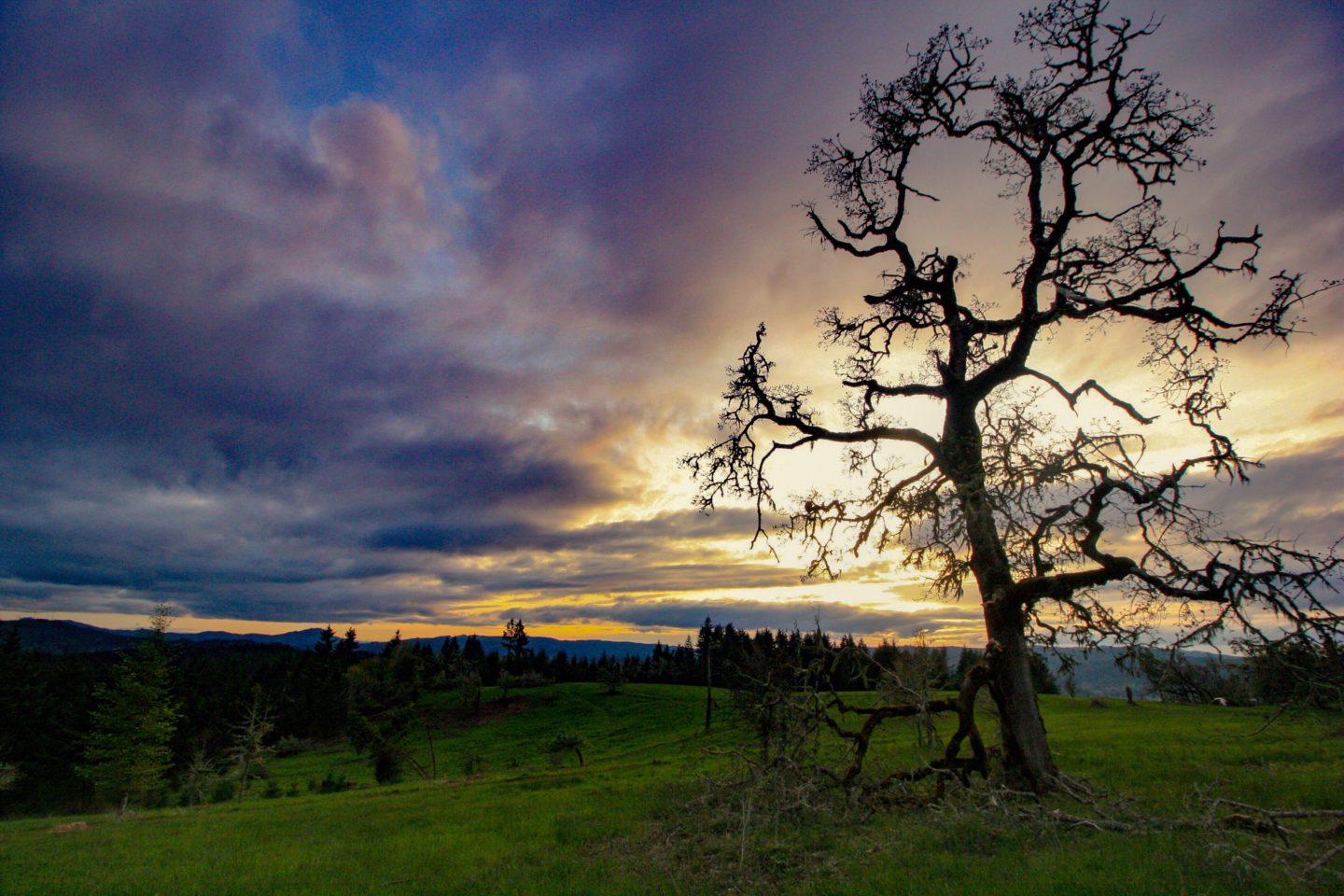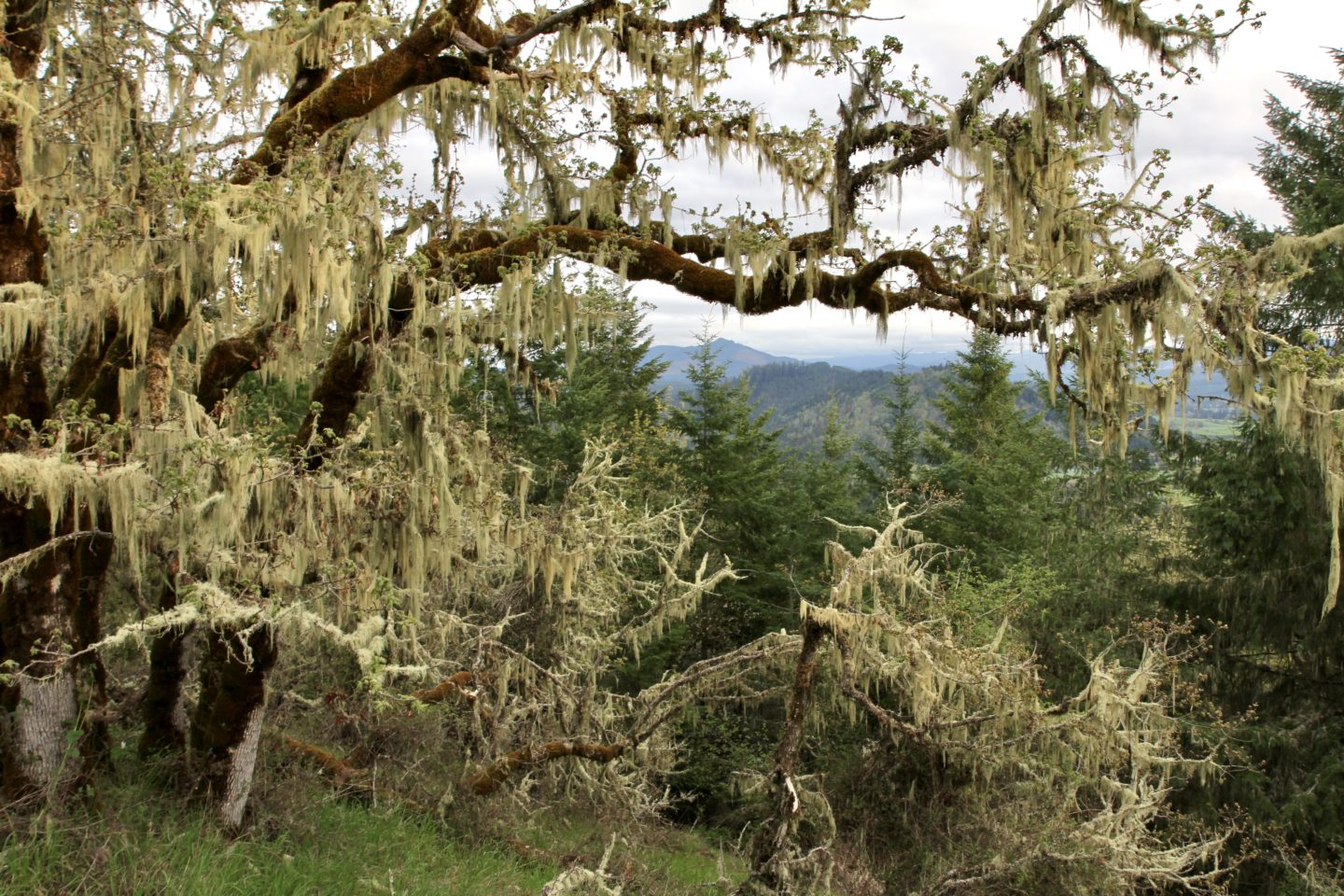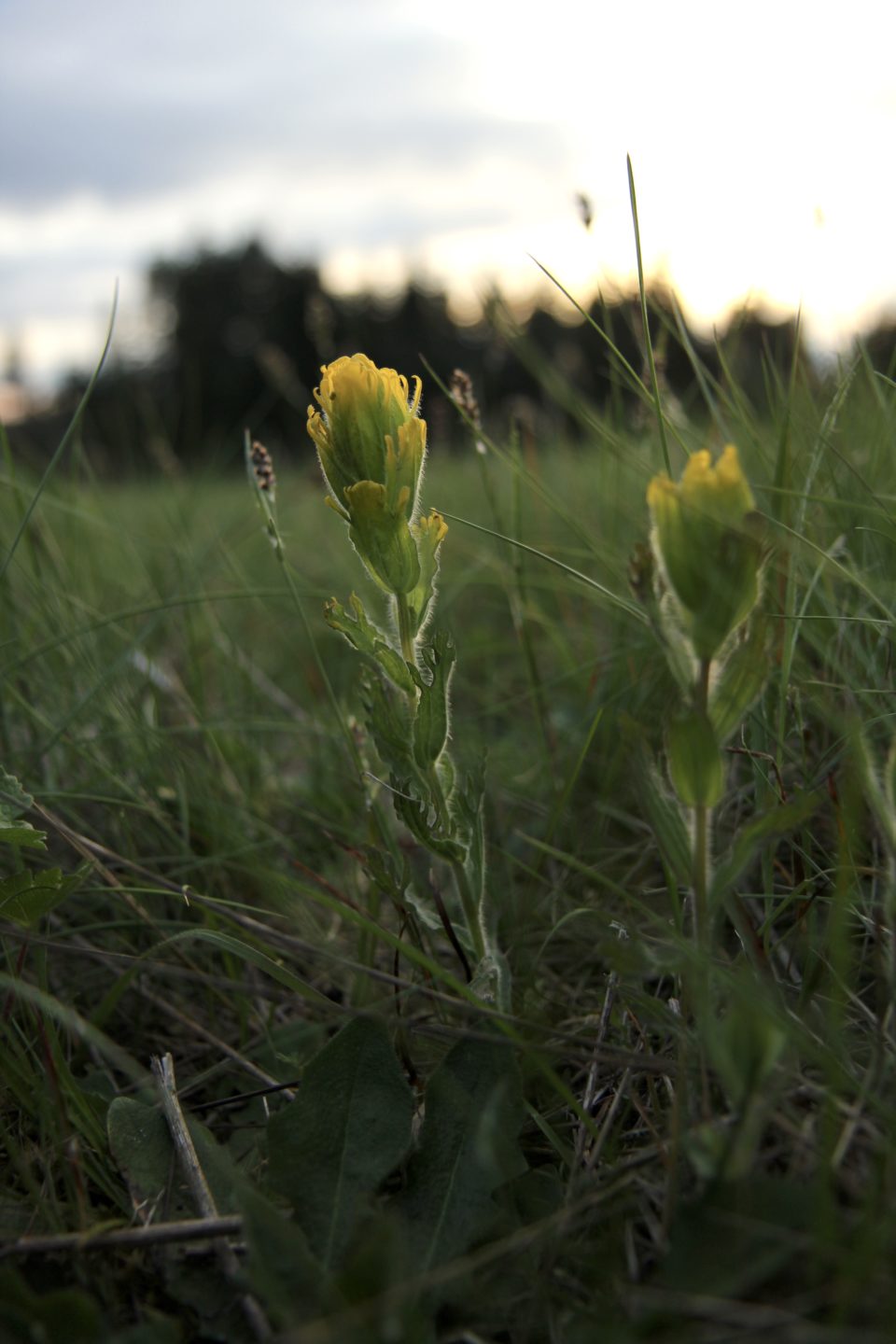326 acres protected for conservation in the Row River Drainage
Photos by Matt McRae
The tangled branches of a gnarled Oregon white oak glisten as the sun makes its way out from behind a cloud. Landowners Linda and Doug Carnine look out at this 326-acre expanse of oak savanna, oak woodland, upland prairie and conifer forest above the Row River. They watch spring unfold on the land they have stewarded for nearly two decades with a sense of contentment and excitement.
This spring has a slightly different feel to it, however. This year the Carnines are watching the wildflowers bloom and the trees come to life on a landscape that has been protected forever through a conservation easement with the McKenzie River Trust.
The Bonneville Power Administration and Oregon Department of Fish and Wildlife provided funding for the protection of this property through a competitive process within the Willamette Wildlife Mitigation Program. The Willamette Wildlife Habitat Agreement, which created the funding program that funded the acquisition, was signed in October of 2010 between BPA and the state of Oregon. This 15-year agreement provides stable funding for wildlife habitat acquisitions for more than 26,000 acres in the Willamette Valley to offset the impacts of federal dams on the Willamette River and its tributaries, as required by the Northwest Power Act. The landowners, Doug and Linda Carnine, also donated a portion of the easement value.


The Legacy of Stewardship Continues
The significance of this land is rich with a history of stewardship. Linda and Doug point out that the conservation on this land didn’t start with them.
This land is in the area of the Village of Chief Halo Tish of the Yoncalla Kalapuya Tribe. The oak savannas were used by Native Americans for harvest of important foods such as acorns and camas. The name Native Oaks Ridge honors that history.
The Carnines will continue to work with the Confederated Tribes of the Grand Ronde, the Confederated Tribes of the Warm Springs Reservation of Oregon on managing the property.

Holistic Land Management
For years, the Carnines have enhanced this land for native plants and wildlife, encouraging a variety of habitats on land once primarily managed for timber.
Starting with the forest, they began restoring the diversity of trees. “A lot of slashpiles from timber harvests were left behind leading to a blackberry jungle,” says Linda of what the property looked like when they first bought it.
“We eradicated most of these with heavy machinery. Then we were able to replant western red cedar, valley pine and incense cedar.”
Grant funds from the Natural Resources Conservation Service helped with forest management like pruning and thinning. “We wanted to include a special forest management area that offers an alternative to monoculture Douglas fir forests,” says Doug. “Species and age diversity of the trees contributes to overall forest health and provides high quality habitat for wildlife.”
The wildlife has taken notice. Between the bird activity and the bear, deer, elk, cougar, bobcat, coyote and fox signs, Native Oaks Ridge provides a home to a host of animals.
Forest management in the conservation easement ensures that the property will continue to be managed holistically. It encourages restoration of oak and prairie habitats, while allowing the landowner to thin for timber.

Restoring oak and prairie habitat
“Today, less than 2 percent of prairie and oak habitats in the Willamette Valley remain. As a result, many plants and animals dependent on these shrinking habitats are threatened or in decline,” says Amanda Gilbert, Executive Director of the Coast Fork Willamette Watershed Council who is a partner in restoration of this property.
One of the Carnines’ major goals for expanding wildlife habitat on the property sparked a 10-year partnership with the US Fish and Wildlife Service (USFWS) Partners Program: to bring the endangered Taylor’s checkerspot butterfly to the prairie.
The Carnines worked with the Partners Program to do a controlled burn on a part of the prairie and seed the area with golden paintbrush, a host plant for the Taylor’s checkerspot butterfly.
Last summer there were 170 golden paintbrush plants counted in the prairie, making this one of the healthiest populations in south-central Oregon.
“Restoring this oak habitat will add complexity back to the landscape, which in turn will support a greater number of plant and animal species and increase landscape resiliency in the face of climate change,” says Gilbert.
“This property is an importance piece of the whole landscape. The watershed is more than just the rivers in it. What goes on in the uplands affects the rivers below,” says Joe Moll, Executive Director of McKenzie River Trust. The Row River, which feeds into the Coast Fork Willamette River, is currently the drinking water source for the City of Cottage Grove.


